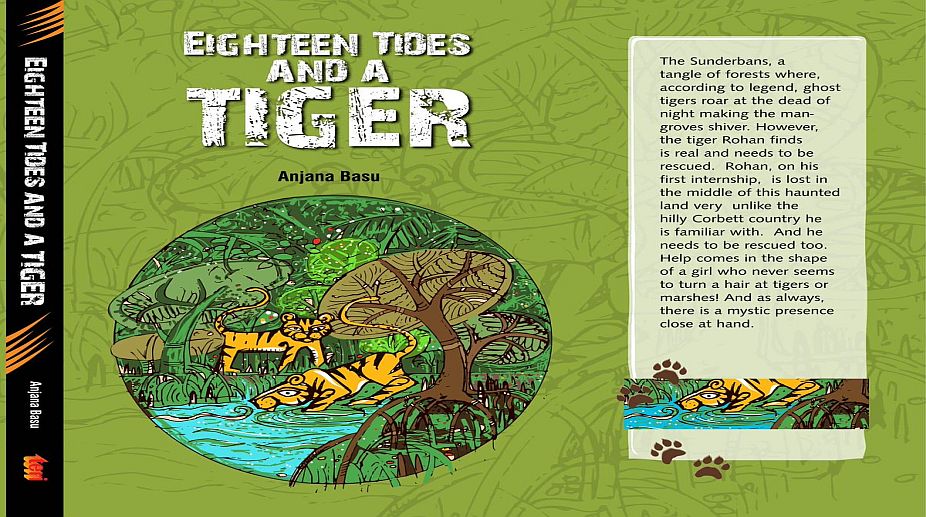The tale begins with an observation of man-animal conflict perceived by an adolescent. Both Anjana’s forewords reflect her two passions — poetry and children! The latter she treats with amused affection and immense patience. Her nephew Rohan’s foreword says that three people were killed by tigers in the Kumaon because “the tiger was terrified on seeing them. This is an example of man-animal conflict”. The message —here’s a story about tigers and children — and not necessarily in that order.
The protagonist (Rohan) is “almost grown-up” but retains his wonder of all things natural and spooky. Manjul (like Rohan she was also there in the earlier stories) is an example of changing village conventions, although she still lives in a hut and herds her family’s cows, Manjul continues to go to school and aspires to be a forest official.
This time Anjana takes her protagonist to the Sunderbans — the land of 18 tides and many tigers and Rohan has to stop thinking “dry footed tigers”. There are tigers aplenty — the first appears in the night on the deck of a boat — respectfully called mama (uncle) by the boatmen. The second is a young tiger in distress. There are also tiger sightings, tigers stalking and scaring tourists — swimming with ease from one island to the next with scant respect for political borders!
Woven into the fabric of the story are the legends of Dakhin Rai and Bon Bibi — the fearsome tiger god and protector of the tigers — the former feared and appeased and the latter worshipped in the Sundarbans. Enter Bibi, a girl who poles a country boat at dead of night; she may be from a nearby village but then she has the skill to appear and disappear without a trace, keeping Rohan (and the readers) on tenterhooks. There is also a gunin (holy man) who blends in with the tree he inhabits, revered by villagers and on call with the Forest Department. Another high point is a fearsome wrestling match between two tigers which reminds one of Amar Chitra Katha stories. By now, Anjana aficionados are asking “But what of Carpet Sahib? Where is the shade of Jim Corbett?” Rohan thinks his mentor doesn’t like mangroves and swamps, but he’s proved wrong.
There are adults we’ve met before,The Khan Sahib and the Major, who give children a chance to have adventures. The tigers are terrifying, but the author explains how cornered they feel with increasing encroachments on their habitats. It’s interesting to see that as always, Bibi shares the stage with Rohan and the tigers. So there are really many tides, lots of creeks and streams, many tigers and multiple protagonists. There are also many stories within the tale. Tiger stories, monkey stories, account of the origin of the Gosaba; and the story that Bibi tells Rohan about young Dukhi. What’s enchanting about the book is that it is told from an adolescent’s perspective. As Ahmed Bhai says, “Who knows what happens in Bonbibi’s forests?”
Read the book to find out what does happen. It will tickle your imagination and may encourage you to take a boat and wander down the creeks that criss-cross the Sunderbans; peering into the undergrowth to see tigers that may or may not be lurking. And if you go, do say a prayer at Bonbibir than for protection — small shrines dedicated to Bonbibi in the Sunderbans.
The reviewer is a freelance contributor











